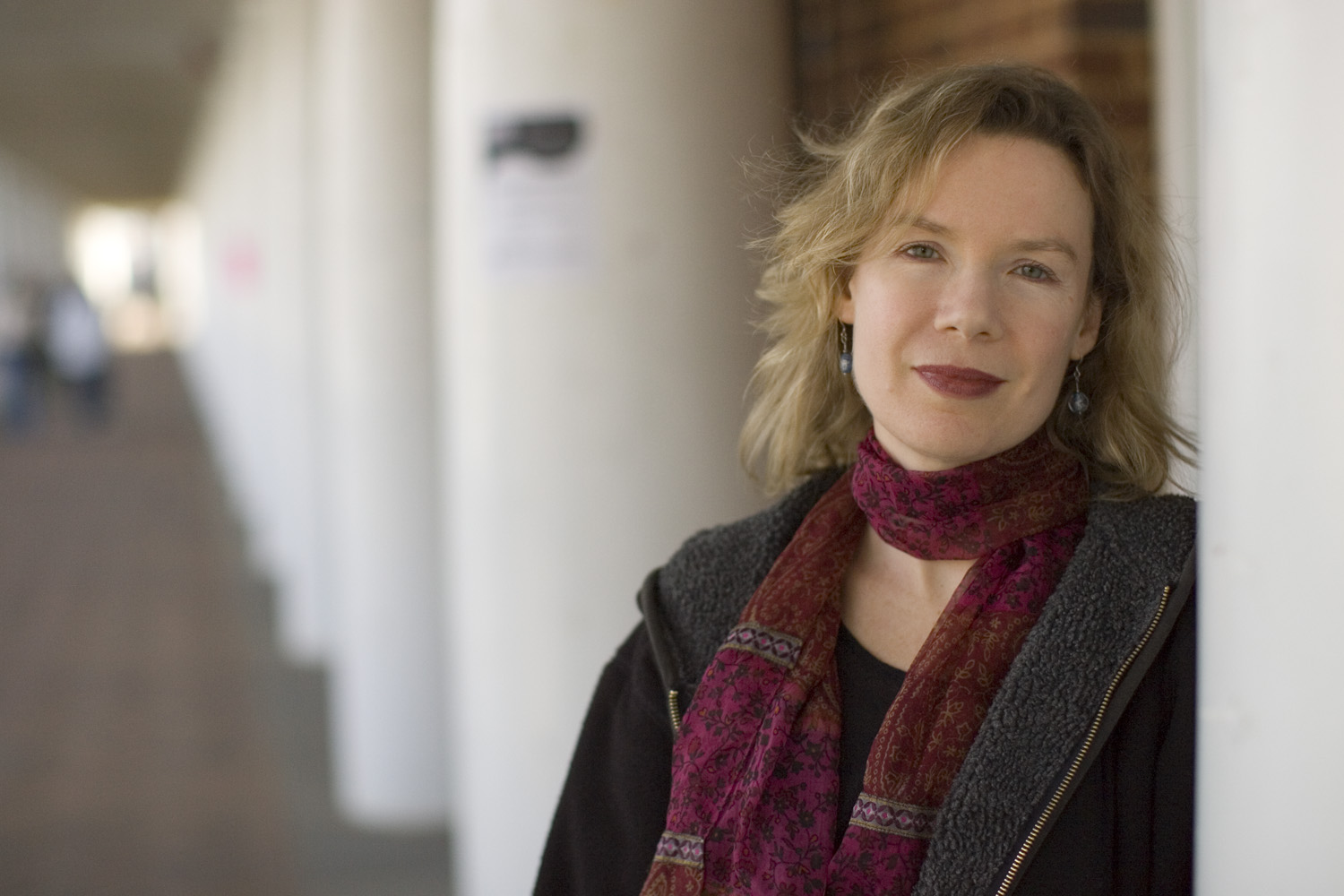June 8, 2012 — As the Spanish explored the New World, a ship stopped in the Chesapeake Bay in 1561 and picked up a Native American youth, whom they took back to Spain. Baptized Don Luis de Velasco, he became an educated translator. In 1570, he accompanied a group of Jesuit priests back to his homeland, where the Spanish established a settlement, Axacán.
When a supply ship visited about 18 months later, the Spaniards found the village deserted, save for one survivor, a Creole youth named Alonso, who said that Don Luis, as he was called by the Spaniards, had murdered the priests.
Don Luis' story is often mentioned in history books as a brief episode, similar to the better-known "Lost Colony" of Roanoke Island, N.C., and preceding the success of Jamestown, said the University of Virginia's Anna Brickhouse, an associate professor of English in the College of Arts & Sciences.
With a one-year fellowship from the American Council of Learned Societies, Brickhouse will work on a book focusing on Don Luis and what she calls "his literary afterlife," which ranges over time from the middle of the 16th century to the mid-20th, as well as the places of Don Luis' travels.
Her interdisciplinary research is taking her into early transatlantic history as well as literature. Using everything she can find about Don Luis' life, from Jesuit reports to fictional accounts, she has found an intriguing trail of details that shows how his story has changed over time and links lesser-known indigenous responses to early encounters with Europeans.
Brickhouse wants to show how "unreliable translators and failed attempts at settlement" reveal as much about America's early history as the celebrated stories of Pocahontas, Squanto and Sacajewea, guides and interpreters who helped Europeans and early Americans settle in their lands.
That's how she came up with the title, "The Unsettlement of America: The Story of Don Luis de Velasco."
There is enough evidence to support de Velasco's violent actions. In the earliest historical studies, Don Luis -- identified as an Algonquian-speaking Indian from the Chesapeake Bay area -- was portrayed as a traitor and a criminal, she said.
After his time in Spain, he was taken to Mexico, where he lived for a few years and was baptized. He also traveled to Florida and Cuba. Brickhouse said it was Don Luis' idea to return to build a Spanish settlement and convert the people to Catholicism. Was he deliberately misleading the Spanish the whole time?
"He had traveled. He had seen a lot of things -- the people of Mexico enslaved, in Cuba, the population decimated," she said. What he did suggests he had a consciousness about the world, "an indigenous geopolitical view."
From her research so far, Brickhouse said she suspects that Native Americans, especially those who were abducted from their homelands and taken to Europe and other places, might have had a network of communication and information exchange that Europeans were not privy to.
One account tells of Don Luis meeting several other Native Americans in Spain who asked about "La Florida," which at the time the Spanish used to describe the southeastern coast from what later became the state of Florida up to the Chesapeake Bay. The story goes that one of the Native Americans answered with fury, saying, "You ask about La Florida, after the desolate state it was in when you left?"
A later literary work, Southern writer James Branch Cabell's 1942 novel, "The First Gentleman of America," portrays Don Luis from a different perspective. Supposedly based on true events, the book makes fun of genteel Virginia class and breeding and treats Don Luis as an ironic figure whose action in squashing the Spanish settlement paved the way for the English to settle in southeastern America.
(James Cabell was related to Joseph C. Cabell, one of the first members of the U.Va. Board of Visitors and the namesake of Cabell Hall.)
"There's something deeply unsettling, something moving, about Don Luis having almost a decade of Western civilization that he could have used to shore up personal power, but opting against that," Brickhouse said. What happened to him after the destruction of the settlement is a mystery.
His story was destined for oblivion, because it challenged the European ideal about the inevitable and righteous settling of America, she said. Instead, it has persisted in "an extraordinary narrative afterlife."
She said this history, rife with misunderstandings and mistranslations, also might provide historical perspective on current issues of immigration and linguistic difference.
Media Contact
Article Information
June 10, 2012
/content/lost-spanish-colony-indians-story-links-unsettling-encounters-early-america

